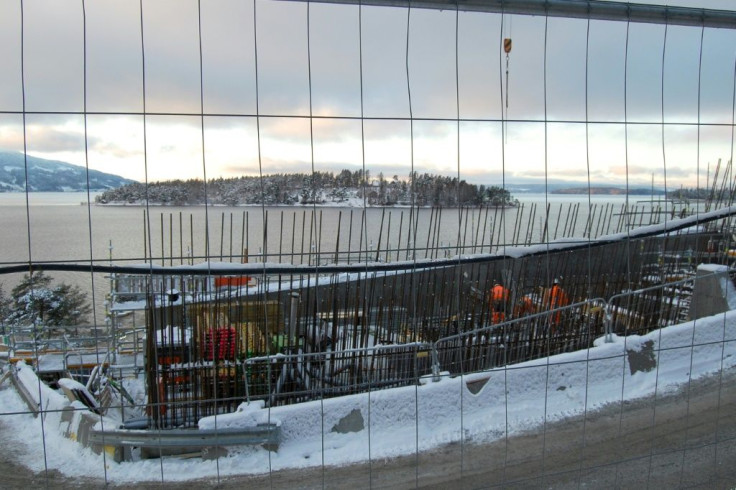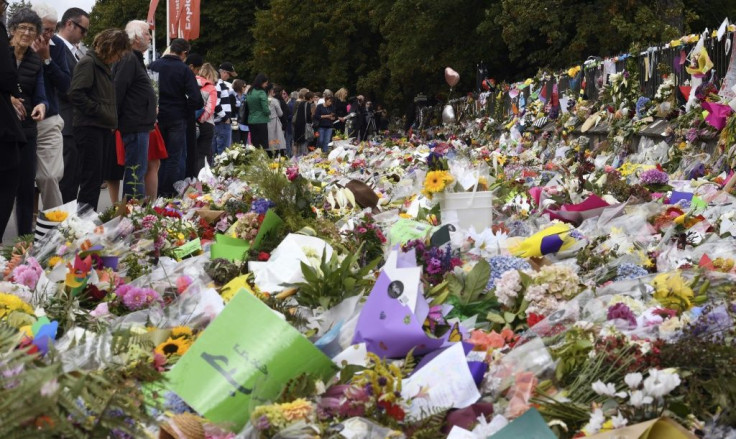Terror Attack Memorials Pose Dilemma: Who Benefits?
The aftermath of every terror attack places Western countries in the same conundrum: How to honour the victims and show national resilience without giving the perpetrators the place in posterity that they crave?
Governments and public opinion have moved mostly towards backing the idea of a physical place to help survivors find closure and give societies strength.
After attacks, the cities of Madrid, Oklahoma, New York, Brussels, Oslo and Manchester all set up either memorials or museums, and sometimes both.
In France, which has been a prime attack target for half a century, President Emmanuel Macron has created a working group to plan for a terrorism memorial and museum to be inaugurated in 2027 in Paris.

"It has become somewhat of an unwritten cultural norm that countries construct memorials to commemorate terrorist attacks," said Jeanine de Roy van Zuijdewijn, a researcher at the Institute of Security and Global Affairs (ISGA) at Leiden University.
But there are sometimes clashing expectations of what such memorials should achieve.
"There can be a tension between the desire to show or mark trauma and showing resilience," De Roy van Zuijdewijn said.

"While some might want to physically mark a place, others might want it to look as normal as possible in order not to credit the terrorist by making damage the most visible element."
The inhabitants of the Norwegian island of Utoya, the main focus of a killing spree by a right-wing extremist in 2011, said from the start they did not want any memorial, which they said would force them to relive a trauma they wanted to forget.
After a legal row lasting six years, a court eventually ruled against them in February, allowing work on the memorial to continue.
Cliff Chanin, executive vice president of the National September 11 Memorial & Museum in New York -- the world's biggest -- recalls a lively debate about how to remember the 2001 attacks that killed 3,000.

"The difficulty is an inherent part of the process. You can't avoid it. It's how you build confidence among all parties during that process that gets you to the outcome," he told AFP.
In the end, Chanin said, it became clear that most Americans wanted a new place as a focus for their collective memory, and not just Ground Zero.
While few experts doubt that many people feel a deep-seated need for something to focus memories on, that something doesn't have to be made of bricks and mortar.
Spontaneous and fleeting tokens of remembrance abounded after attacks in Madrid, Brussels and Paris in the form of flowers, photographs, drawings, and poems.

Sometimes slogans can perform the same function, like the "Je Suis Charlie" ("I am Charlie") catchphrase that went viral after the January 2015 attack on satirical magazine Charlie Hebdo.
Sometimes, it's national leaders who come up with suggested ways to allow citizens to remember the victims while depriving the attackers of any such attention.
After the Christchurch attack in New Zealand that killed 51 in 2019, Prime Minister Jacinda Ardern said she would never pronounce the name of the perpetrator.
"He sought many things from his act of terror but one was notoriety. And that is why you will never hear me mention his name," she said.
Five local media agreed on some ground rules to cover the trial of attacker Brenton Tarrant, with the aim of depriving the Australian of a platform for his white supremacist ideology.
Hans Davidsen-Nielsen, a reporter at the Danish paper Politiken, felt inspired by the initiative and urged his country's media to follow suit.
"Without press coverage, the interest in committing atrocities would evaporate," he said.
It is, however, "an illusion to imagine that the media should look the other way", he added in an article entitled "How To Not Be a Useful Idiot when Covering Terrorism".
But for many, it is a stretch to imagine that a place of remembrance could somehow avoid identifying killers and their motivations.
"If you don't believe in collective guilt for an act as you shouldn't, then you have to have the individuals be responsible for their own behaviour and their decisions," said Chanin.
"How do you present that, if you don't actually present the individuals who did these horrible things?"
He said the New York museum set the 9/11 attackers apart by showing them only in pictures provided and stamped by the FBI, and in a very different display style from the victims.
Henry Rousso, a historian leading the French memorial working group, said he too had little time for any approach that omitted the names or the motives of attackers.
"That's not my approach," he said. "I wouldn't create a museum on Nazism that doesn't name Hitler."
When American forces killed Al-Qaeda chief Osama Bin Laden in 2011 they took no chances with posterity: They threw his body into the open sea at an undisclosed location, making sure that his followers would never have a site at which to pay their respects.
© Copyright AFP {{Year}}. All rights reserved.





















